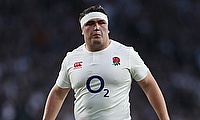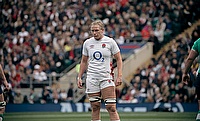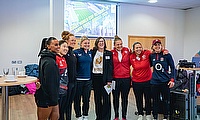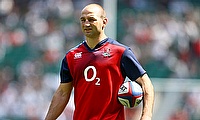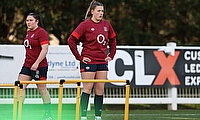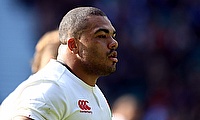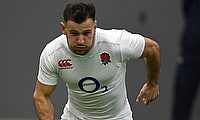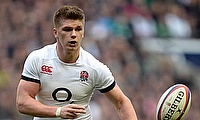Owen Farrell can be England's answer

What will Owen Farrell's role be in England's RWC2015 campaign
©TRU
It’s been a superb season for George Ford, who has not only inspired a resurgent Bath side, but has also made the England 10 jersey his own, sparking talented back lines for both club and country in the process.
For Stuart Lancaster, the next couple of months are all about making sure his side is as fit, cohesive and prepared as possible for the upcoming Rugby World Cup, and that includes finding Ford some much-needed help at England’s troublesome inside centre position.
Brad Barritt would bring defensive steel that is currently missing, whilst Kyle Eastmond would add a creative and elusive threat. Luther Burrell offers a balanced and consistent third option, having manned the jersey during the Six Nations.
Their talents, though considerable, do not necessarily give England (and Ford) what they need at the position, however.
As said previously, Ford has enjoyed a wonderful season, but a growing worry is how he has performed in the three biggest games of that season – England’s trip to Ireland in the Six Nations, Bath’s European Rugby Champions Cup quarter-final against Leinster and the Aviva Premiership final versus Saracens. All three games were losses for Ford’s sides.
In those three games, Ford’s sides never had more than 45% of the territory and aside from the Premiership final, where Bath had 50% of the possession, were also giving up sizeable possession advantages to their opposition. Much of this was due to Ford’s tactical kicking which fell far below his usual high standards.
Possession and territorial advantages don’t guarantee victories, but they are required to be the platform for unleashing a potent back line, something which Ford did with abandon in other games this season.
In fairness to Ford, he was excellent in all other aspects of his game against Leinster in the quarter-final of the Champions Cup and it was by no means a poor performance overall, but the reoccurrence of his tactical kicking going awry in the pivotal games should be a concern to Lancaster.
Ford is well on his way to being a genuine world class fly-half, but he is also young and still maturing, and if this chink in his armour were to show up against Wales or Australia in the group stage, or in the knockout rounds should England progress, then it could be the fatal flaw in England’s plan.
The Bath man deserves first crack at the 10 shirt this summer due to his stellar season for club and country, those three games mentioned notwithstanding, not to mention the need for consistency going into a RWC. That said, England do need to examine the possibility of playing Saracens’ Owen Farrell outside him.
Farrell is a player who has shown his best when the pressure is on and his inclusion at inside centre would give England the second kicking option they need should Ford lose his compass in the intense spotlight of the RWC. The combination wouldn’t give Ford the contrasting footed kicker that Jonny Wilkinson enjoyed with Mike Catt in 2003, but the dynamic would be similar.
The biggest knock on Ford prior to this season was his inconsistent goal kicking and though the former Leicester Tiger has come on leaps and bounds in that area over the last 12 months, having Farrell’s pinpoint boot in the XV, especially for longer distance kicks, would be a welcome security blanket for Lancaster.
England’s next competitive action comes in the form of three RWC warm-up games, playing France home and away before finishing up at Twickenham against Ireland, and they provide the perfect opportunity to test out this dynamic ahead of the event itself.
Farrell is certainly physical enough to deal defensively with the bigger bodies further out in the back line and should shore up a midfield which, for all its attacking endeavour this season, looked remarkably unorganised during the Six Nations. If it struggled to contain the midfields of the northern hemisphere, the generally more experienced and creative midfields of the southern hemisphere could pose a real problem.
There is no question that Farrell has the defensive and distribution skills to succeed as the second receiver, but what he needs to show over the next couple of months is that he is dangerous enough as a carrier to threaten defensive lines.
He is no stranger to taking the ball to the line from the fly-half spot, stepping inside and beating a man or two, but it’s a different kettle of fish entirely at inside centre. Farrell will need to pick lines which will test the weak, inside shoulders of defenders and, at the same time, fix his man on decoy lines, creating the space for Jonathan Joseph to excel outside of him.
The potential of a Ford-Farrell-Joseph midfield is considerable and the inclusion of the Saracen seems, at least on paper, to help solve two pertinent issues swirling around this English back line – their defence and their tactical kicking.


